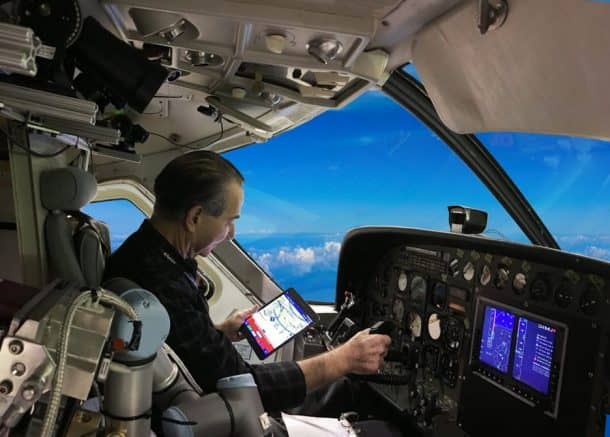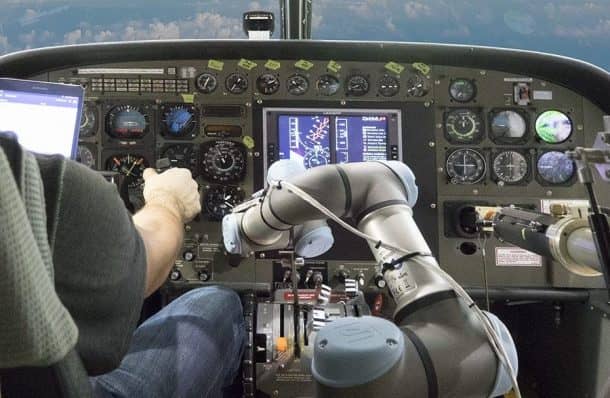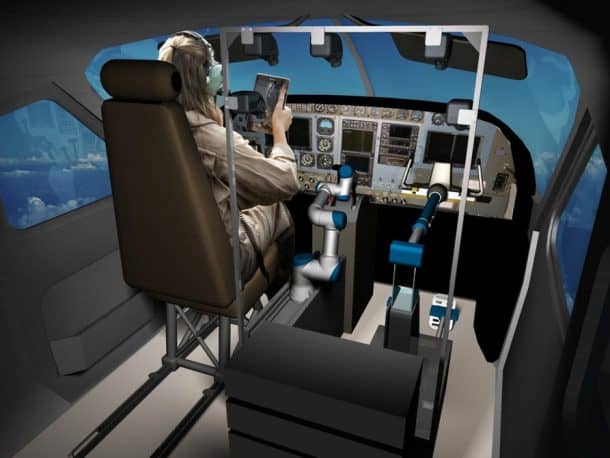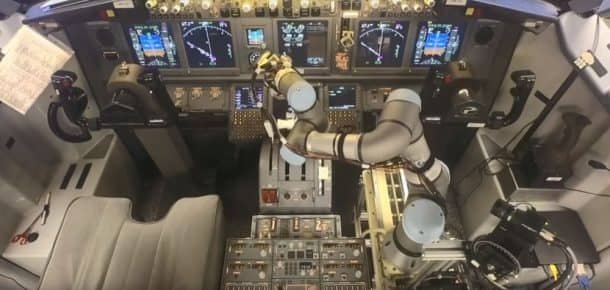The US Defense agency DARPA has announced that a robot has managed to fly and land a simulated Boeing 737 successfully. Funded by the US military, the robot was developed and operated by Aurora Flight Science as a part of the US defense agency DARPA’s research program titled “Aircrew Labor In-Cockpit Automation System”(ALIAS).

The purpose of the research program was to develop a system that will help the pilots operate civilian and military aircraft which require exceptional skills, particularly in unexpected situations. Using a robot to operate the controls of a jet simulator does not sound like the brightest idea, but ALIAS is a highly sophisticated system that deals very well with the complex modern aircraft. ALIAS uses computer vision to understand its surroundings using visual input as well as a human would. The arm can manipulate the flight controls just like a human hand would.

The automatic system can serve as both a trainer and a co-pilot. Incorporation of such systems, however, will require a complete redesign of the craft, or otherwise require customization of the design to the need of each aircraft.
DARPA is developing the ALIAS to deal with both these problems so it can be fitted in a variety of aircraft at a lesser cost. Once the system is installed, it can adjust itself to the role of a co-pilot after analyzing the craft.
The automated system offers a tablet-based user interface, and the speech recognition and machine learning software give the pilot a lot of control. Alternative versions may provide support by tracking the jet’s physical and mission state. The system will allow the human pilot to concentrate on the higher level decisions without getting distracted in emergencies. It will reduce the size of the crew needed, and eventually cause a decline in the airplane operating costs.

The Aircrew Labor In-Cockpit Automation System was tested in a Boeing 737-800NG simulator at the US Department of Transportation’s John A. Volpe National Transportation Systems Center in Cambridge, Massachusetts. The system has also been tested on a Cessna 208 Caravan, UH-1 Iroquois, DHC-2 Beaver aircraft, and Diamond DA42 twin-engine prop plane.

Aurora’s Vice President of Research and Development, John Wissler commented:
“Having successfully demonstrated on a variety of aircraft, ALIAS has proven its versatile automated flight capabilities. As we move towards fully automated flight from take-off to landing, we can reliably say that we have developed an automation system that enables a significant reduction of crew workload.”
Watch the system flawlessly performing flight maneuvers and bringing the aircraft to a landing.


